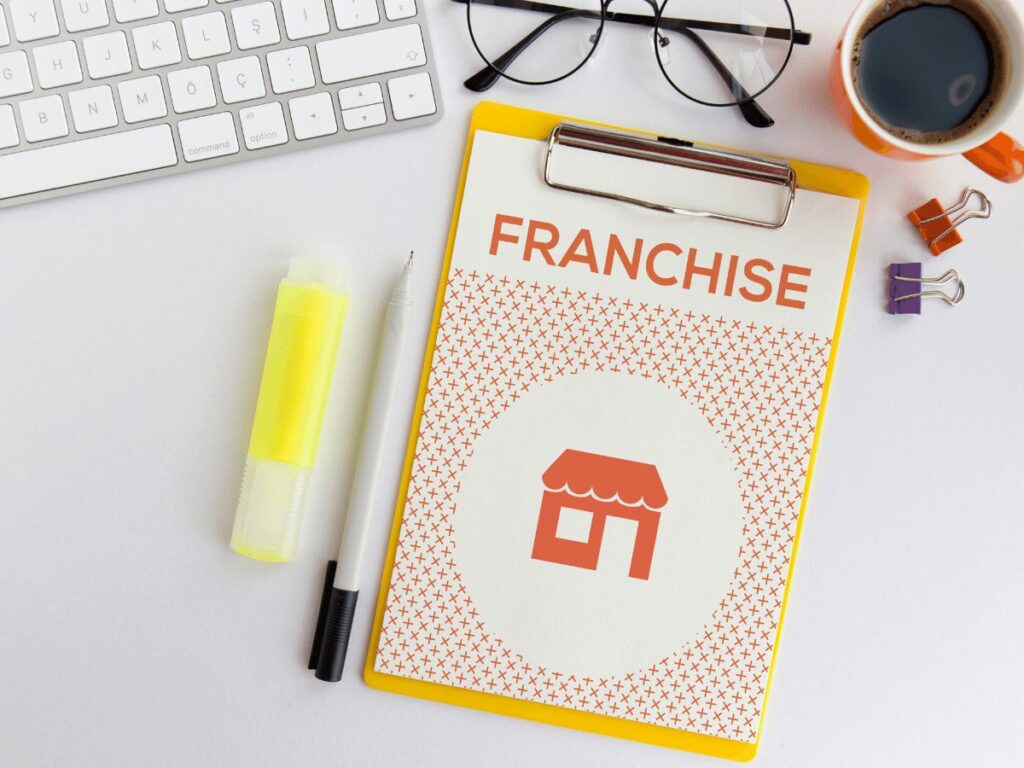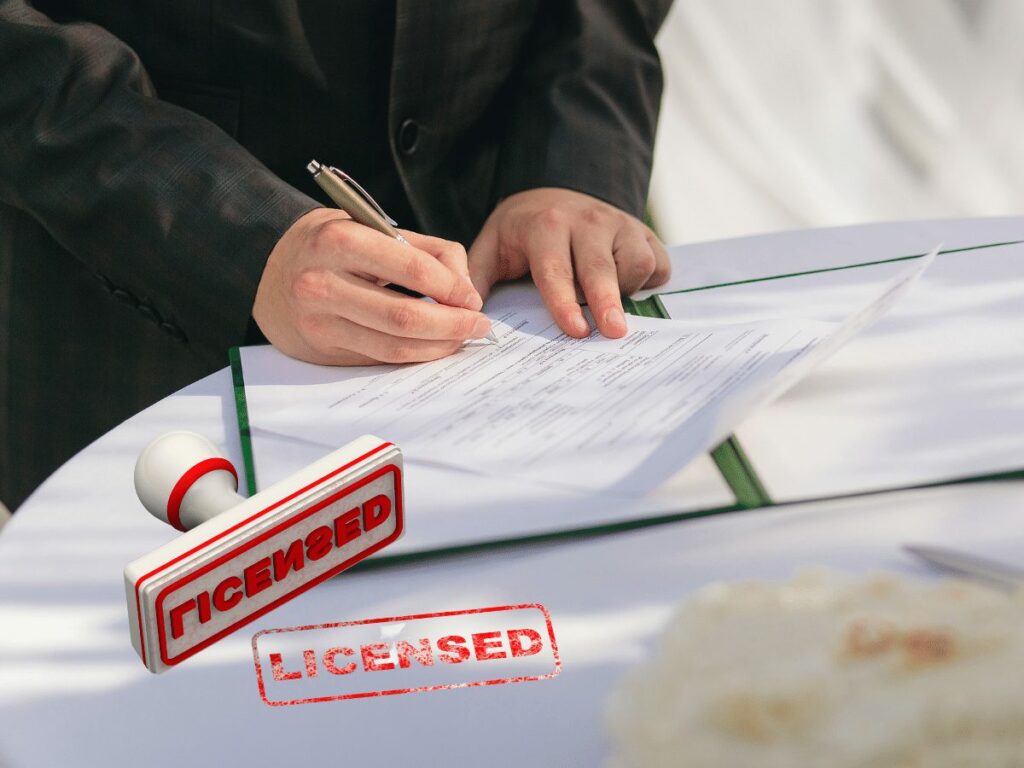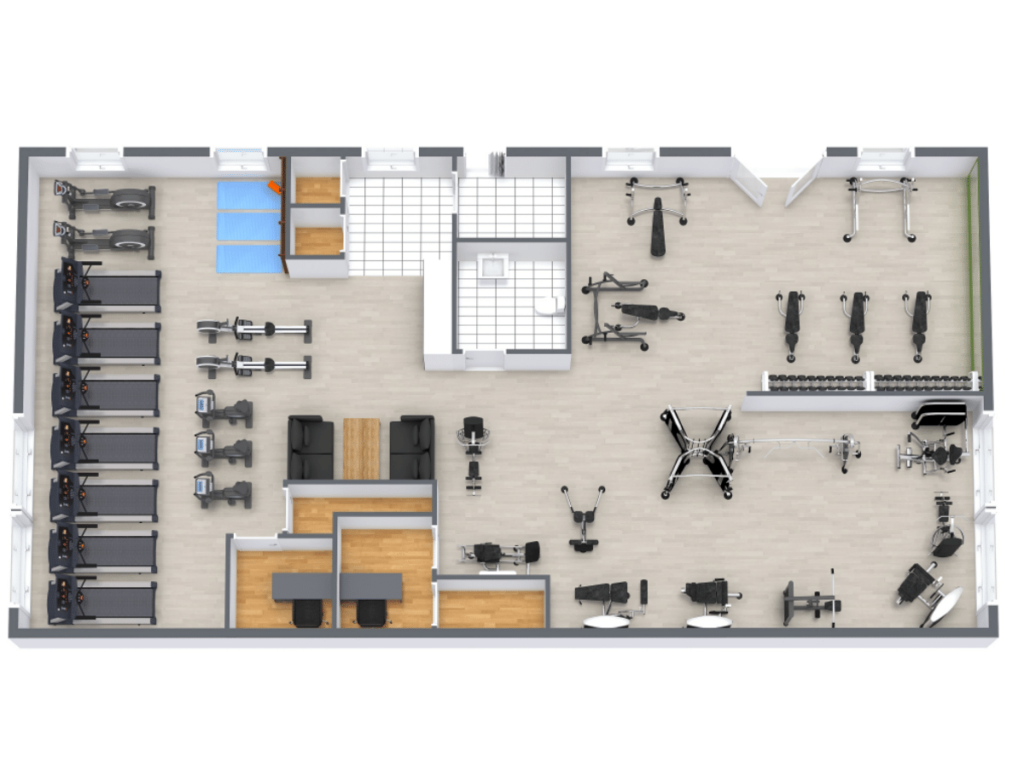Are you considering opening a gym franchise but feeling overwhelmed by the myriad of costs involved? Navigating the financial side of launching a fitness center can be complex, and understanding the expenses is crucial for your business’s success.
As a gym expert with years of experience, I’ve seen it all and am here to help you break down the costs of starting and running a gym franchise. There are several gym franchise options to consider, including well-known brands as well as smaller boutique fitness studios.
In this article, we’ll dig into the ultimate guide to gym franchising costs, giving you the knowledge that you need to comprehend before opening a franchised gym business. At the end of this article you will be able to have a better understanding of the cost of starting a franchised gym and the considerations that you need to take.
So, buckle up for I will give you a ride towards a successful fitness business!
Table of Contents
1. Understanding Gym Franchise Costs
As an industry expert, opening a gym franchise carry factors that contribute to the total expenditure, which includes the franchise fee, setup costs, equipment costs, and ongoing fees like royalties and marketing fees. According to Fit Small Business, there are different fitness franchises to choose from, with an average cost of around $350,000, can vary widely based on the specific factors.
Moreover, other ongoing expenses to consider include staff salaries, utilities, maintenance, and potential property rent or mortgage if the building is not owned outright. In my view, it’s important to have a clear understanding of these costs and to have a comprehensive business plan to ensure profitability in a long run.
2. 5 Factors Affecting Gym Franchise Costs
Investing in a gym franchise can be a lucrative business venture, but it’s important to understand the costs involved. The total investment required for a gym franchise can vary widely depending on several factors. We’ll take a closer look at the factors that can affect gym franchise costs:

#1 Franchise License
A franchise license allows the gym businesss to have access to a business’s (the franchiser) proprietary knowledge, processes, and trademarks. According to Studio Growth, the franchise license fee can range from $10,000 to $50,000 or more, depending on the franchise. And on top of that, it’s important to carefully review the franchise disclosure document (FDD) to understand the costs involved in purchasing the franchise license.

#2 Size of the Gym
A larger gym franchise will require more equipment, real estate, and staffing, which can increase the total investment required. According to GymDesk, the average gym franchise costs in the United States in 2021 were $80,000 to $120,000. However, this can vary widely depending on the size of the gym. As a starter for this fitness business, you can basically start with a smaller gym size.

#3 Type of Gym
The type of gym franchise chosen can have a significant impact on the overall cost.For example, a full-service gym with a wide range of amenities may require a higher investment than a smaller boutique gym that specializes in a particular type of workout.
#4 Equipment Used
The equipment used in the gym can impact the total cost of ownership, as high-end equipment can be more expensive to purchase and maintain than lower-cost options. It’s important to carefully consider the type of equipment needed for the gym and to find a balance between quality and cost. If looking for top graded commercial gym equipment that franchisor will surely agree with, visit Yanre Fitness.
#5 Staffing
The cost of staffing the gym can be a significant expense, as it is needed to hire fitness instructors, personal trainers, and other employees. With my stand, you should hire professional fitness trainers for your franchised gym business, for a rapid generation of profits.
3. Breakdown of Typical Gym Franchise Costs
Owning a gym franchise entails various initial costs, some of which may seem daunting at first. However, by understanding these expenses and planning for them, effectively navigate the financial aspects of the gym franchise. Here we’ll cover the main components of the initial outlay:
Initial Franchise Fee
The initial franchise fee is the ticket to the franchisor’s brand and business system. Typically, these fees can range anywhere from $20,000 to $50,000, depending on the brand’s reputation and the benefits receive from the franchise agreement. This fee grants the license to use the franchisor’s brand name, access their operational methods, and benefit from their existing customer base.
Leasehold Improvements and Construction Costs
To transform leased space into a gym that reflects franchise’s brand, there’s a need to invest in leasehold improvements. These include renovations, fittings, and interior design, which can vary significantly based on the size of premises and the standards set by the franchisor. For example, spending about $500,000 to remodel a gym, fitting it out with showers, locker rooms, and a reception area.
Gym Equipment Expenses
Depending on the type of gym, the cost of equipment can range from $30,000 to $500,000. Some franchises require specific brands and types of equipment, which may entail a larger investment. However, remember that this is a long-term investment that will impact the gym’s appeal to potential members. In my experience, top-tier equipment does wonders for customer satisfaction and retention.
Initial Inventory and Supplies
Before opening the doors, there’s a need to stock up on initial inventory and supplies. These items might include towels, cleaning supplies, office supplies, and any retail products planned to sell. Though these costs vary depending on the gym’s size and services, expect to budget a few thousand dollars for these essentials.
Insurance and Licensing Fees
As a gym owner, being responsible for ensuring the safety of the members is crucial. This necessitates comprehensive insurance coverage, which can cost between $1,000 and $2,000 annually. Allocate a budget for any local licensing or permit fees required to operate the gym legally.Consider this an essential part of your ‘gym-owner starter kit’, right alongside your trusty water bottle and fresh pair of trainers.
Training and Support Costs
Franchisors often provide initial training and support to new franchisees, but these services may come at a cost. This might include onsite training, hiring and training staff, and ongoing support throughout the franchise agreement. In some cases, these costs are included in the initial franchise fee, but it’s essential to clarify this with the franchisor.
Marketing and Advertising Fees
Before the grand opening, create a buzz and attract members. Franchisors usually have strict guidelines for marketing and may require contributions to a national advertising fund. Costs can vary, but expect to spend around 2-4% of the annual revenue on marketing efforts.
4. Ongoing Franchise Costs
The ongoing costs of maintaining a franchise can stack up and must be taken into consideration for long-term budgeting. These recurring expenses are part of the franchising agreement and ensure the continuity of the brand, support from the franchisor, and contribution to collective marketing efforts. Let’s delve into some of the main ongoing costs that should be expected:
Monthly Royalty Fees
These fees are typically calculated as a percentage of gross sales and are paid to the franchisor. This cost allows to continue using the franchise’s brand name and to benefit from ongoing corporate support and services. As an industry expert, these royalties are a worthy investment considering the brand recognition and the ongoing support provided by the franchisor.
Advertising Fund Contributions
Contributions to the advertising fund are another regular expense that should be expected as a gym franchise owner. These are payments made to the franchisor for brand-wide marketing and advertising initiatives. The advantage is that these funds are used for promoting the franchise as a whole, benefiting all franchisees. Contributions are calculated as a percentage of the monthly gross revenue, just like the royalty fees.
Renewal Fees
Another recurring expense that may incur is the franchise renewal fee. When the franchise agreement term comes to an end, to continue running the franchise gym, pay a renewal fee to the franchisor. Just like our Sunday family dinner tradition, it’s a customary obligation that you can’t ignore. This is usually less than the initial franchise fee and allows to extend the agreement for another term.
Cost of Ongoing Training and Support
While many franchisors offer initial training and support as part of the initial franchise fee, there might be ongoing costs associated with additional training or support services. Whether it’s for new equipment, software, or practices, expect to bear some training costs. This ensures that the gym remains up-to-date and continues to deliver the quality and services expected by the franchise and its members.
5. Financing Options for Gym Franchises
Opening a gym franchise can be a profitable business venture, but it requires a significant investment. Having very tight capital to invest in a gym franchise, financing can be an attractive option for the dream. Now, take time to deal with these financing options:
Bank Loans
With a bank loan, the franchisee makes payments based on their cash flow, and the amount they receive depends on the value of the franchise. FM Consulting stated that franchisees can usually secure financing from banks or credit unions. Banks offer a wide variety of financing options and capital to fit the needs of the project.

Here’s how it works, bank loans will be the answer to the financial problems because of the high capital that they offer with lower interest rates.
SBA (Small Business Administration) Loans
The Small Business Administration (SBA) provides loans to small businesses, including gym franchises, to help them start or expand their businesses. According to Glofox, SBA loans typically have lower interest rates and longer repayment terms than conventional bank loans. However, the application process can be more time-consuming and require more documentation.
This table provides a basic overview of SBA loans for gym franchises and is not exhaustive. It’s always recommended to consult with financial professionals or SBA representatives for more detailed and up-to-date information regarding specific loan programs and requirements.
SBA (Small Business Administration) Loans for Gym Franchises | Description |
| Loan Purpose | To help small businesses, including gym franchises, start or expand their operations. |
| Loan Features | Generally lower interest rates compared to conventional bank loans. Longer repayment terms, providing more time for businesses to repay the loan. |
| Application Process | More time-consuming compared to conventional bank loans. Requires additional documentation and paperwork. |
| Benefits | Lower interest rates can result in reduced monthly loan payments. Longer repayment terms offer greater flexibility for repayment. Access to funding for small businesses that may not qualify for traditional bank loans. |
| Considerations | Longer application process may delay access to funds. Extensive documentation requirements may require more effort from applicants. |
Franchisor Financing
Franchisor financing is a popular financing option available for entrepreneurs who want to start a gym franchise. In this financing option, the franchisor, or the gym franchise company, provides funding to the franchisee to help them get started. It is a fact that franchisor financing can be the convenient option for franchising a gym business.
Equipment Leasing
Instead of purchasing equipment outright, franchisees can lease equipment from a leasing company. The leasing company retains ownership of the equipment while the gym owner pays monthly lease payments to use the equipment. According to ELEASE, leasing gym equipment can provide financing for organizations requiring anywhere from $10,000 to $5 million worth of equipment.
Now, it is important that you should carefully review the terms and conditions of the lease agreement to ensure that it’s a good fit for the business.
6. 5 Tips to Minimize Costs and Maximize Profitability
Owning a gym franchise is not just about managing costs, but also about maximizing profitability. To achieve a good return on investment when opening a gym, make strategic decisions and take calculated risks. Here, we’re going to talk about key strategies that can implement to minimize costs and maximize profitability:
#1 Choosing the Right Location
The location of the gym franchise can significantly influence its success. An easily accessible location with ample parking can attract more members.Besides, it’s important to understand the target market and select a location that fits their lifestyle. Locating the gym near residential areas, business parks, or within a bustling city center can attract different clientele.
#2 Negotiating Lease Terms
Lease or rental cost is one of the largest ongoing expenses for a gym franchise. Therefore, effective negotiation of lease terms can lead to substantial cost savings. Ensure that the lease agreement is flexible and can accommodate future growth and other changes in thhe business. Negotiating a favorable lease was one of the most beneficial steps I took to keep my overhead costs low.
#3 Buying Equipment Wisely
Choosing durable, reliable, and easy-to-use equipment can save money in the long run, even if it may seem more expensive initially. Yanre Fitness, a leading manufacturer of gym equipment, comes into play, providing commercial-grade equipment that promises longevity and excellent performance. Always remember, safety and quality should not be compromised for cost savings.
#4 Effective Staff Management
Labor costs can quickly become one of the largest expenses. Effective staff management includes ensuring efficient scheduling to avoid overstaffing, investing in staff training for better member retention, and maintaining a healthy work environment to minimize staff turnover.
#5 Smart Marketing Strategies
Marketing the gym effectively is key to attracting and retaining members. Leverage social media platforms, search engine optimization, and community events to promote the gym. An effective marketing strategy can be cost-effective and have a high return on investment. Remember, satisfied members are the best marketers, so focus on excellent service delivery and encourage members to share their experiences.
Conclusion
As an experienced gym owner, I can confidently say that understanding the various costs involved in launching and operating a gym franchise is fundamental to the success and growth of your fitness business. We hope that this ultimate guide towards gym franchising costs provides you a comprehensive understanding of the things that need to be considered about becoming a fitness gym franchisee.
If you are planning to be a franchisee and have more questions about having franchised gym business, feel free to contact us and our expert team is always ready to address your inquiries.
Related articles:








